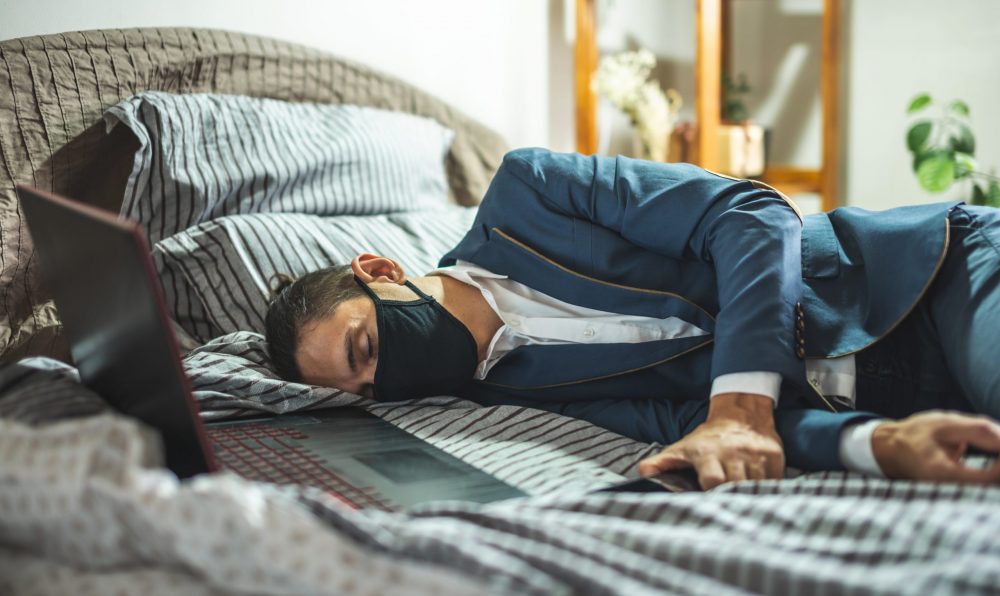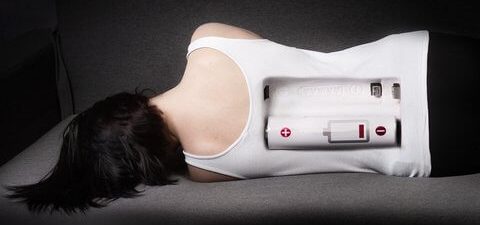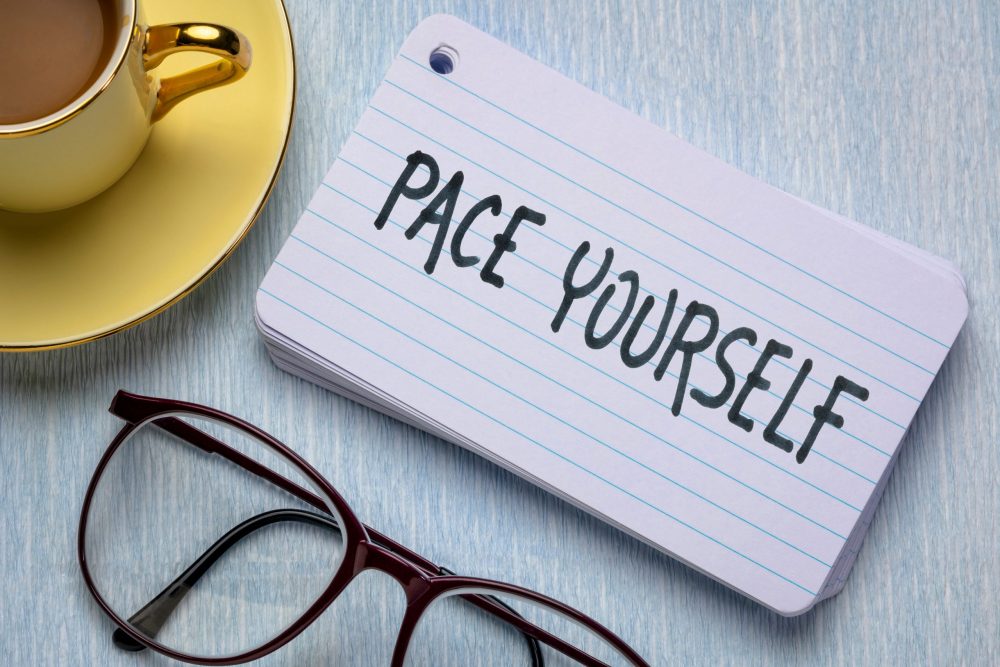Now live! RTHM Direct – simplified medication access for Long COVID, ME/CFS and related conditions. Check it out
We have all had days where we work hard and push ourselves, only to feel worn out by the end of the day. This is the healthy body’s response to hard work. However, after a bit of rest, the body recovers, and you are ready to take on the next day. For those with post-exertional malaise, however, it isn’t that easy. Even the simplest of tasks can lead to debilitating crashes as the body is unable to recover in a healthy manner. Post-exertional malaise is considered the cardinal symptom of myalgic encephalomyelitis/chronic fatigue syndrome (ME/CFS). However, it is also now being seen in patients with Long COVID.
What is Post-Exertional Malaise (PEM)?
The definition of post-exertional malaise (PEM), also known as post-exertional symptom exacerbation or post-exertional neuroimmune exhaustion, is the often delayed worsening of symptoms after minimal physical or mental activity. These symptoms can include debilitating fatigue, body pain, muscle weakness, and cognitive dysfunction. Symptoms often appear 24 hours after physical or mental activity, but the symptoms are not in proportion to the activity. For example, you may feel good today and decide to go for a walk around the block. You feel fine afterward but when the next day hits, you are overwhelmed by symptoms.
PEM is not the same as fatigue or exhaustion. Many patients describe post-exertional malaise as hitting a wall. The body just doesn’t function. You are physically and mentally spent and, in many cases, may be confined to bed for days after a simple activity. And it isn’t just physical activities that can trigger PEM. Cognitive overexertion or sensory overload can trigger PEM, as well as environmental changes like dramatic shifts in temperature or air pressure before a storm. While healthy people can easily adapt to these changes, they can cause PEM in severe patients.
What Triggers Post-Exertional Malaise?
While the definition of post-exertional malaise states that any physical or mental demand on the body can trigger an increase in symptoms, triggers can be much more than that. In severe cases, even basic bodily functions, such as breathing and blood circulation, can produce an energy expenditure that is simply too much for the body to process, resulting in increased symptoms. This can make basic self-care impossible, let alone the idea of participating in normal daily activities.
Physical activities are not just exercise-based. Physical exertion can occur by performing simple daily functions such as a shower, cleaning the house, or simply driving to a doctor’s appointment or grocery shopping. Even the smallest amount of exertion can trigger PEM when disease presentation is severe.
Aside from physical or mental exertion, other common triggers for PEM can include:
- Sensory overload – this can include everything from too much noise, light, vibrations, or movement.
- Emotional stress – this can include everything from helping others deal with their feelings, a death in the family, relationship issues, and more.
- Weather changes – changes in seasons and temperature can be enough to put additional stress on the body.
- Exposure to chemicals or environmental toxins – This can include everything from your favorite perfume or cologne to cleaning products and the presence of mold.
- Medications – Changes in your daily medications, including supplements, can put additional stress on the body, triggering your PEM.
Symptoms Occurring with Post-Exertional Malaise
Each individual person experiences different symptoms when they trigger PEM. However, researchers asked a study focus group to explain their symptoms of PEM. While they all describe symptoms as all-encompassing with symptoms affecting every part of their body, common symptoms, with varying intensity, include:
- General symptoms – exhaustion, difficulty sleeping, flu-like symptoms, loss of bladder control, chills, low-grade fever, and a drop in temperature
- Cognitive symptoms – difficulty thinking clearly, memory problems, and difficulty finding the right words when speaking
- Neuromuscular symptoms – muscle pain and weakness, joint pain, muscle stiffness, clumsy movements, muscle spasms, and widespread body pain
- Sensory symptoms – sensitive to light, sound, and smell as well as blurry vision
- Ear, nose, and throat symptoms – sore throat, sore glands or lymph nodes, sinus pain, congestion, and heavy eyes
- Cardiovascular symptoms – low blood pressure, reduced or elevated heart rate, fainting, heart racing or pounding, and increased sweating
- Neurological symptoms – dizziness, headache or migraine, burning pain, tingling or numbness, tremors, slurred speech, and blurry vision
- Gastrointestinal symptoms – nausea, diarrhea, loss of bowel control, constipation, cramping, and loss of appetite
- Pulmonary symptoms – difficulty breathing, shortness of breath, and chest pain
- Dermatologic symptoms – hives and rashes
Treating PEM
The goal of PEM treatment is to avoid triggering a PEM episode. Because triggers are different for everyone, this means treatment must be very individualized. For those with PEM, keeping a diary may be beneficial to help identify triggers to try avoiding them when possible. Unfortunately, many times some of your triggers are unavoidable, so identifying other triggers helps you avoid multiple triggers at the same time. Oftentimes, changes in heart rate can indicate a potential trigger, so investing in a wearable device that measures heart rate can be beneficial.
Exercise is medicine except when it’s not!!
Exercise Will Not Cure PEM
“Start exercising and you will feel better.” Unfortunately, many people with chronic medical conditions often hear from their physicians that exercise is all they need to help reduce their symptoms. The reasoning behind this is that when a body doesn’t move, deconditioning occurs. Deconditioning is a decline in physical and/or psychological function due to long periods of inactivity. However, PEM is NOT a form of deconditioning! And while exercise does help those with deconditioning, exercise can make someone with PEM so much worse.
Most specialists agree that people with post-exertional malaise should be as active as they are able without exacerbating their symptoms to reduce the risk of muscle atrophy and aid in digestion, metabolism, and circulation. While some people may find help with gentle exercise as they improve, others do not. It all boils down to the limits of the individual.
Your ideal level of activity is unique to YOU! The goal of PEM management is to learn your body limits and stick within your individual parameters. If you feel good, resist the urge to push yourself, as you will likely pay for it tomorrow.
We will discuss pacing below as a way to balance your activity and rest. However, you may find some physicians still push for exercise, as the old standard was to treat people with post-exertional malaise using graded exercise therapy. However, we now know that this form of therapy, while it may be beneficial for other chronic conditions, is detrimental to those with PEM. There is, however, something you can do to help improve your cardiovascular and muscle strength without too much physical exertion.
Diaphragmatic Breathing
For most people, normal breathing tends to be shallow and does not utilize the full capacity of the lungs. Diaphragmatic breathing, also known as belly breathing, is an exercise technique that fully engages your diaphragm and stomach muscles while helping to increase your lung efficiency. This breathing exercise helps to strengthen the diaphragm, improves core muscle stability, helps slow your breathing rate, heart rate, and blood pressure, increases available oxygen to the body, and promotes relaxation. Practicing diaphragmatic breathing a few times a day can greatly improve your endurance and muscle strength and it is easy enough that you can perform this exercise in bed. Follow these steps:
- Lie on a flat surface with your head elevated on a pillow and pillows underneath your knees so you are in a comfortable position.
- Place your left hand on your upper chest and your right hand on your abdomen, just below the rib cage.
- Slowly inhale through your nose, pulling your breath down toward the stomach. Your chest should remain still while your abdomen pushes your hand upward.
- As you exhale, tighten your abdominal muscles and allow your stomach to fall downward. Again, the chest should remain still.
Practicing diaphragmatic breathing in this way for 5-10 minutes, three to four times a day is beneficial. When you become comfortable with this exercise, consider trying this breathing technique while sitting or standing. This is a great way to take time out during your day to focus on breathing, rest, and recover as you will learn in pacing.
Pacing is the Most Important Treatment Technique for PEM
Pacing is a treatment strategy that helps you establish a balance between rest and activity in order to help you conserve energy reserves and avoid pushing yourself past your limit. By using pacing techniques, you can help reduce the occurrence and severity of PEM symptoms and relapses. With the regular use of pacing, many people can, over time, increase their functional capacity. Pacing is a key treatment for those with post-exertional malaise and it is essential to understand the concepts in-depth. Therefore, we will focus an entire post on pacing, how it works, and the benefits it provides.
To learn more about pacing, CLICK HERE

Get updates
Join our mailing list



